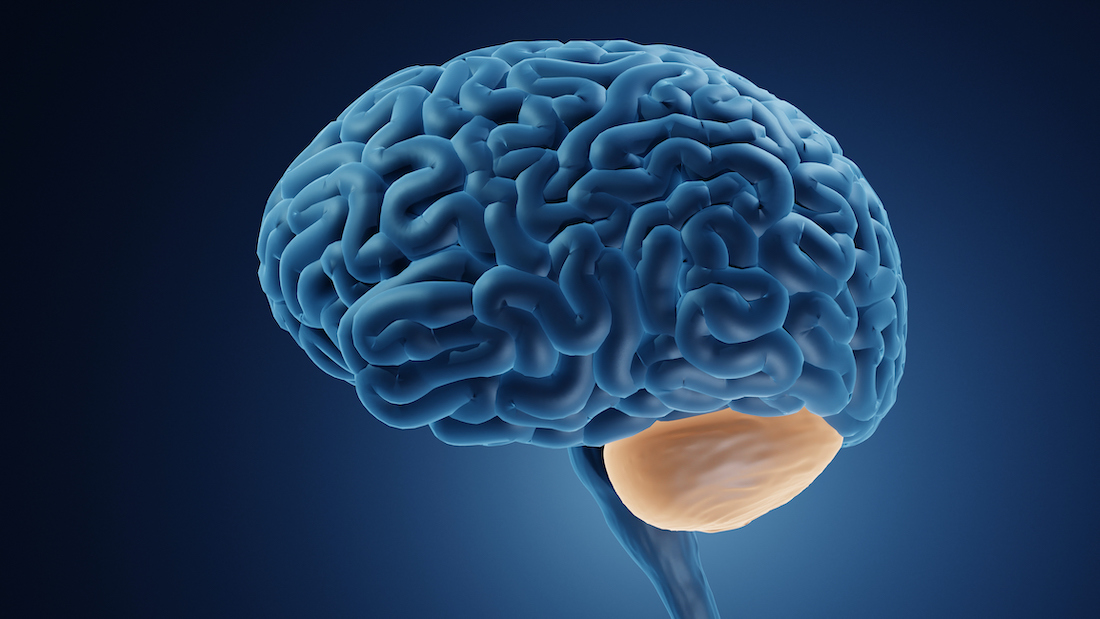Activating cerebellum shows promise for neurocognitive therapy
UTSW researchers discover that modulating Fmr1 gene’s activity in the brain improved behaviors in fragile X mutant model

DALLAS – Jan. 11, 2024 – A study of mutant models of fragile X syndrome (FXS), a genetic disorder related to autism and intellectual disability, shows that activation of the cerebellum mitigates aberrant responses in sensory processing areas of the brain and improves neurodevelopmental behaviors. The findings, published by UT Southwestern Medical Center researchers in Cell Reports, could offer an opportunity for developing new therapies for neurocognitive disorders.

“This study has important clinical implications because, while the majority of people affected by neurocognitive illness have symptoms elsewhere in the brain other than the cerebellum, treating the cerebellum specifically could be sufficient to produce improvement,” said Peter Tsai, M.D., Ph.D., Associate Professor of Neurology, Neuroscience, Pediatrics, and Psychiatry at UT Southwestern. Dr. Tsai is an Investigator in the Peter O’Donnell Jr. Brain Institute.
UTSW researchers examined the contributions of the cerebellum to FXS, building on their previous research on the role of the cerebellum in autism spectrum disorders (ASD). FXS is linked to high rates of ASD, accounting for up to 2% of all ASD cases. The disorder, which results in challenges and impairments in social behaviors, cognitive function, and sensory hypersensitivity, is caused by silencing of the fragile X messenger ribonucleoprotein 1 (Fmr1) gene in FXS.
The new study found that mice lacking Fmr1 in cerebellar output neurons had impaired social behaviors. The cerebellar Fmr1-deficient mice were less interested in social stimuli and had heightened sensory hypersensitivity in audible startle testing.
Mice lacking Fmr1 throughout the body also had similar social impairments, sensory hypersensitivity, and learning challenges. However, researchers found that reintroducing the gene only into neurons in the cerebellum in these global Fmr1 mutant mice resulted in improved behavior and learning as well as reduced sensitivity to sensory stimulation as compared with mice lacking Fmr1 globally including within the cerebellum.
In addition, researchers found that reintroducing the gene only into neurons in the cerebellum in the global Fmr1 mutant mice restored normal levels of neuron excitability within the cortex. Fixing the hyperactivity in the cortex has been linked to improvement in cases where Fmr1 is missing, and thus cerebellar expression might influence neurodevelopmental behaviors through this mechanism. “It is striking that genetic reintroduction of Fmr1 just in the cerebellum leads to improved physiological function in other brain regions, even though the gene is still missing in those regions,” Dr. Tsai said.
Having established the impact of both cerebellar-specific and global Fmr1 mutants on neurodevelopmental behaviors, the researchers investigated the effects of cerebellar modulation. They found that stimulating the function of cerebellar output neurons in a specific cerebellar region known to have important roles in neurodevelopmental behaviors could improve impaired sociability, learning, and sensory behaviors.
“Given the cerebellum’s role in interacting with other brain regions, modulating or influencing the cerebellum could potentially offer clinical benefits for individuals with neurodevelopmental challenges,” Dr. Tsai said, emphasizing the clinical importance of this finding.
Other UTSW researchers who contributed to this study are first author Jennifer Gibson, B.A., graduate student; Anthony Hernandez Vazquez, B.S., graduate student; Kunihiko Yamashiro, Ph.D., postdoctoral researcher; Vikram Jakkamsetti, M.D., Ph.D., Instructor of Neurology; Chongyu Ren, M.D., Ph.D., Research Scientist; Katherine Lei, B.A., medical student; Brianne Dentel, B.S., graduate student; and Juan Pascual, M.D., Ph.D., Professor of Neurology and Pediatrics.
Dr. Pascual holds the Ed and Sue Rose Distinguished Professorship in Neurology and The Once Upon a Time Foundation Professorship in Pediatric Neurologic Diseases.
This research was funded by the National Institute of Neurological Disorders and Stroke of the National Institutes of Health (K08NS083733, NS102588, and NS077015), National Institute of Mental Health of the NIH (R01MH116882 and R01MH120069-01A1), the National Heart, Lung, and Blood Institute (1T32HL139438-01A1), and the Sleep and Circadian Rhythms Training Program (T32HL139438).
About UT Southwestern Medical Center
UT Southwestern, one of the nation’s premier academic medical centers, integrates pioneering biomedical research with exceptional clinical care and education. The institution’s faculty members have received six Nobel Prizes and include 26 members of the National Academy of Sciences, 21 members of the National Academy of Medicine, and 13 Howard Hughes Medical Institute Investigators. The full-time faculty of more than 3,100 is responsible for groundbreaking medical advances and is committed to translating science-driven research quickly to new clinical treatments. UT Southwestern physicians provide care in more than 80 specialties to more than 120,000 hospitalized patients, more than 360,000 emergency room cases, and oversee nearly 5 million outpatient visits a year.
